By Bryan McMahon
National University of Natural Medicine,
College of Classical Chinese Medicine
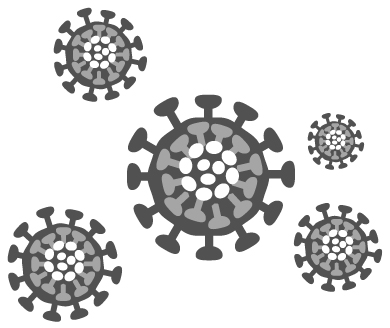 After following the development of the corona virus outbreak from afar for these past several months, I have taken a renewed interest in COVID-19 as a novel clinical presentation as it began to make its presence felt here in North America. In addition to the many clinical reports published by physicians on the front lines, I have also been discussing the disease and its context at some length with my mentor Dr. Li Xin and others in China who have been providing effective remote support and herbal treatment for individuals suffering from various upper respiratory conditions, some with clear history of exposure to the virus. My own personal impression based on numerous clinical encounters and further confirmed by fellow practitioners, was that late 2019 into early 2020 here in North America was already shaping up to be a remarkable cold and flu season even before the appearance of the corona virus. Since then, it is precisely this inability to clearly differentiate early stage symptoms of COVID-19 infection from more routine seasonal afflictions that has proven particularly troublesome from a public health perspective. However, this space of uncertainty is exactly where a holistic medical perspective that takes into account both individual and environmental conditions has much to offer both for the early stage intervention for seasonal upper respiratory conditions, and more importantly, their prevention.
After following the development of the corona virus outbreak from afar for these past several months, I have taken a renewed interest in COVID-19 as a novel clinical presentation as it began to make its presence felt here in North America. In addition to the many clinical reports published by physicians on the front lines, I have also been discussing the disease and its context at some length with my mentor Dr. Li Xin and others in China who have been providing effective remote support and herbal treatment for individuals suffering from various upper respiratory conditions, some with clear history of exposure to the virus. My own personal impression based on numerous clinical encounters and further confirmed by fellow practitioners, was that late 2019 into early 2020 here in North America was already shaping up to be a remarkable cold and flu season even before the appearance of the corona virus. Since then, it is precisely this inability to clearly differentiate early stage symptoms of COVID-19 infection from more routine seasonal afflictions that has proven particularly troublesome from a public health perspective. However, this space of uncertainty is exactly where a holistic medical perspective that takes into account both individual and environmental conditions has much to offer both for the early stage intervention for seasonal upper respiratory conditions, and more importantly, their prevention.
In the face of intimidating circumstances, it is important as Chinese medical practitioners to remind ourselves to remain firmly rooted in the core tenants of this holistic medicine: firstly, that all disease arises from the interaction of individuals and their environment, constantly adapting and changing with the flow of time; and secondly, to always treat the individual based on their constitution and current state of vitality. To better appreciate the role of the macro-level influences on patient presentations, Chinese physicians of the past paid close attention to the dynamics of environmental factors commonly referred to as wuyun liuqi 五運六氣. While not intended to eclipse in-person diagnostic findings, the system of wuyun liuqi can shed much light on the backdrop from which pathology is emerging, much like the background setting for the character driven action of a stage play. In 1956, Pu Fuzhou (1888-1975), one of the great master practitioners of his time, effectively used heat and toxicity clearing together with yin nourishing strategies to successfully treat over 90% of cases in an outbreak of Japanese encephalitis in the city of Shijiazhuang. When another outbreak of the same disease emerged the following year in nearby Beijing, these same methods proved largely ineffective. Instead, he successfully employed more gentle strategies in the Fever School (wenbing) style to circulate the yang and transform damp heat, noting that the causative environmental factors had shifted from the previous year.
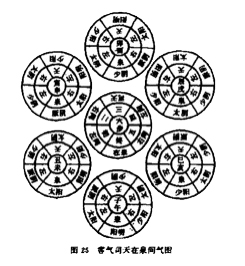
A system like wuyun liuqi helps not only gain perspective on pathodynamics, but is also useful for identifying individuals and populations most vulnerable to different ailments in different years, or even within periods of the same year. Not every aspect of the wuyun liuqi dynamic will affect everyone in the same way or to the same degree: the stronger one’s vital qi (particularly that of the earth element with its function of moderating and harmonizing), the less prone one will be to shifting external forces, including those of the natural world. Each of us also possesses certain constitutional patterns of irregularity in the balanced movement of our vital energy to one degree or another, aberrations that are further exacerbated whenever that same force is prevalent in nature. Think of the classic example of the two tuning forks coming into proximity, except that in this case, one of the tuning forks represents you and the other represents the combined power of the entirety of Heaven and Earth!
To better understand this current outbreak, let us first return to November of last year. The suiyun 歲運, or dominant movement, of 2019 (己亥年 jihai nian) was defined by deficiency of earth (土不及 tu bu ji), making “sogginess and stagnation” (濡滞 ru zhi) of the Taiyin network a primary underlying factor exacerbating pathology for the year. Jueyin Wind Wood and Shaoyang Minister Fire governed the first and second halves of the year respectively, creating an overlay of the forces of wind and fire onto a period generally lacking in the stability of earth. This is further enhanced by both the controlling influence of Jueyin Wind Wood over an already deficient earth element and the generational relationship of Jueyin Wind Wood energy in the first half of the year with Shaoyang Minister Fire in the second. Chapter 70 of the Yellow Emperor’s Classic of Medicine (Huangdi neijing), entitled “The Great Discourse on the Five Normative Policies,” describes the conditions resulting from this combination of Wind and Minister Fire as:
Wind fans the flames and Fire spreads widely, creating summer damp conditions on the ground and causing people to generate strong internal heat, resulting in damage to the jinye fluids and bleeding. Hibernating insects will emerge in number, flowing waters will fail to freeze and the mechanisms of disease will develop rapidly.
These conditions culminated in the final of the six qi phases of the year, from the solar terms of Lesser Snow (小雪 xiaoxue) to Great Cold (大寒 dahan), correlating roughly to the critical period of late-November through early February, characterized in chapter 71 as:
During the final qi, a ferocious Fire drives the heavens, powerfully engendering the yang causing hibernating insects to emerge, flowing waters to not freeze, and widely disseminating the Earth qi. Although the grasses will flourish and the people feel comfortable, they will suffer from epidemics of warm disease.
The controlling relationship shared by the dominant qi (zhuqi) of Taiyang Cold Water and guest qi (keqi) of Shaoyang Minister Fire for this period, overlayed with the Shaoyang Minister Fire governing this second half of last year is another warning sign for potential extreme events. Whether you put much stock in these ancient systems of prognostication or not, a quick review of weather on the ground in Wuhan from early November through mid-December shows periods of wild temperature fluctuation, with consistent highs 10-12°F (5-7°C) above average. The description of “emerging insects” and “dissemination of Earth qi” clearly indicate that disruption of the normal storage of yang qi below ground, i.e. within the Kidney system, as the foundation for these fast-spreading communicable diseases, something particularly relevant when appraising the susceptibility to infection by COVID-19. Clearly those at highest risk such as the elderly and chronically ill populations could be more broadly defined by Chinese medicine as those whose capacity of Kidney storage is most compromised.
The period of late December into January also marks the time of year when the dominant movement of one year transitions to that of the next. It tends to be a time of relative instability as these two forces push against one another, creating a varying degree of conflicting movement within the qi dynamic, again based on the relative strength of a given individual’s vitality. As mentioned above, 2019 was a year of deficient earth with a strong tendency toward the generation of dampness and phlegm, another key constitutional element influencing susceptibility to COVID-19. The dominant movement of this year (庚子年 gengzinian) is one of excessive metal (金太過 jintaiguo), with Taiyang cold water governing the heavens for the first of the six qi periods of the year, adding to the downward constraining action of excessive metal. These excessive metal years are characterized in Suwen Ch. 69: Great Discourse on Changes Arising from Qi Interaction by “generalized dryness”, “pain in the chest that radiates to the back”, “fullness beneath the ribs and abdominal distention” and “counterflow coughing and gasping”. In combination with the symptoms of Shaoyin emperor fire governing the heavens for the first half of the year listed in Suwen Ch. 71 as “warm disease arises in the upper, with clear diseases below, cold and heat become trapped and battle within the middle leading the people to suffer from coughing and gasping,” a general picture of COVID-19 infection consistent with early accounts from Wuhan and elsewhere in China clearly emerges. The chief complaint of sore throat and dry cough would progress toward respiratory distress and a feeling of dry, sticky phlegm that the patient could not expectorate, reflecting constraint of the Lung system as upward rising wind and fire energies attacked the bottle-neck of the throat, depositing damp phlegm from the middle directly into the lungs, all sitting over vacuity of the middle, and often lower, burner(s). Constitutionally patients displayed classic signs of deficient Taiyin damp stagnation with a wide, swollen, pale tongue with a thick, sticky white or mixed coating as well as thirst with little desire for fluids, water retention in the extremities, physical fatigue, difficult speech, nausea and diarrhea. Even the relatively long asymptomatic period of incubation, gradual onset of symptoms and low-grade fever are all consistent with slow moving, Taiyin damp earth-based pathology!
Effective treatment strategies from this early period widely disseminated in domestic Chinese publications and later via the internet clearly reflect the need to resolve pernicious damp toxicity (辟穢化濁 pihui huazhuo), address underlying Taiyin qi deficiency, and alleviate constrained Lung heat with possible damage to the yin fluids. They primarily featured formulas based on fragrant, pungent, mobile herbs to dry dampness and alleviate lung constraint together with bland or non-cloying qi tonifying herbs to assist the circulation of the middle and upper burners. Seeds that work to moisten and resolve dry phlegm (潤燥化痰 runzao huatan) such as Gualouren (Trichosanthes seed), Xingren (Apricot seed), Baijiezi (Mustard seed), and Laifuzi (Rasdish seed) have been highlighted as key additions in many cases. For those particularly deficient cold individuals, herbs like Fuzi (Aconite), Xixin (Asarum)and various forms of ginger have been used to expel Shaoyin level impacted damp cold phlegm pathogens. As we now move forward into the warmer spring months and a period characterized energetically again primarily by Wind and Fire, the qi dynamic will begin to expand upward and outward more strongly. I anticipate that symptoms of constrained heat, dryness and impacted phlegm in the upper burner will become more pronounced. Writing from Portland, Oregon where we have had a very early and powerful onset of spring the past two weeks followed by a sudden cold, wet snap back to “normal”, I can say with absolute certainty that the Wood-Metal dynamic of expansion and contraction is going to be further thrown off in many over-stressed, under-rested individuals.
In terms of treatment strategy, we should adhere to the principle expressed by Li Dongyuan (1180-1252), one of the Four Great Masters of the Jin and Yuan dynasties, “Tonification and dispersion depend on the flavor [of a formula]; its qi nature should be adjusted as needed [according to time/season].” (補瀉在味,隨時換氣 buxie zai wei sui shi huan qi) For individuals of a predominantly damp, cold constitution still energetically based in the winter season, warm and pungent herbs like Mahuang (Ephedra), Xixin (Asarum), Baizhi (Angelica dahurica), Fangfeng (Siler), Baizhu (Atractylodes, white), Cangzhu (Atractylodes, red), Houpo (Magnolia bark) and various forms of ginger will continue to play a key role; for those who present primarily with constrained or counterflow heat patterns with pressure on the Lung system and stagnation at the surface, pungent, cool and slightly bitter herbs like Rendongteng (Lonicera stem), Jingjie (Schizonopeta), Chaihu (Bupleurum), Lianqiao (Forsythia), Shigao (Gypsum), Zhuru (Bamboo shavings) and Zhuye (Bamboo leaf or Lopatherum) should be combined with items to circulate or descend through the interior as appropriate.
Most importantly what an investigation of wuyun liuqi can reveal for us in the face of a widening epidemic are the keys to its prevention. In addition to good hygiene practices and social distancing regulations that are being widely enacted, Chinese medicine can inform us on the actions that we can all take right now for ourselves and our patients to increase resistance to COVID-19.
First and foremost, protect the middle.
A virus must find the appropriate terrain within which to take hold and replicate. This particular one seems to prefer damp, stagnant conditions. This means adjusting dietary choices to prevent damage to the Spleen and Stomach yang qi by eating lighter, easy to digest, mostly warm, cooked foods. Visiting the supermarket yesterday, I noticed that the very foods we should be cutting back on were the ones that had been completely bought out, namely milk, yogurt and eggs.
- Cut back on or completely avoid processed foods, sweets, beer, and any cold and frozen items from the refrigerator.
- Augment meal prep with plenty of fresh herbs and fragrant spices. If juicing is part of your daily health regimen, stick mostly to vegetable juices and supplement with fresh ginger, turmeric, pepper, parsley, coriander and small amounts of garlic.
- Keep up with basic daily supplements like probiotics, Vitamins C and D and trace minerals.
- Add Chinese herbal medicine into your daily health regimen:
Basic Formula for Vitality and Prevention
Baizhu (Atractylodes, white) 5g, Chenpi (Cirus peel) 3g, Baibiandou (Dolichos bean) 10g, Peilan (Eupatorium) 6g, Baihe (Lily bulb) 6g, (Sheng) Gancao (Licorice) 3g (or roughly corresponding amount in granules of 2-3g x twice/day). Boil for 10 minutes and drink warm as a tea 2-3 times/day
For Damp-Cold Constitutions
add Baidoukou (Cardamon) 3g, Fangfeng (Siler) 6g, Shengjiang (Ginger, fresh) 6-10g
For Damp-Heat Constitutions
add Houpo (Magnolia bark) 3g, Yiyiren (Coix) 12g, Huangqin (Scutellaria) 3g
For Constrained Fire
add Chaihu (Bupleurum) 3g, Zhuru (Bamboo shaving) 6g, Jinyinhua (Lonicera) or Rendongteng (Lonicera stem) 6g
*Note: Formulas with a heavy dosage of drying herbs such as Mahuang (Ephedra), Xixin (Asarum), etc. that strongly open the Lung and surface should not be taken for preventative purposes as they are said to “waste qi”
(耗氣 haoqi) and will deplete the overall vitality.
For deficient, cold, damp individuals (i.e. those most constitutionally susceptible to infection), use regular moxibustion therapy to boost immunity.
General protocol: ST-36, SP-6, RN-12, GB-34, DU-14 (in that order) indirect pole moxa 5’ each side, 2-3 times/week. If signs of internal heat arise (dry mouth, heat or sweating at night, mouth ulcers, itchy skin), combine with appropriate degree of exercise between sessions.
For pronounced cold dampness: alternate with KI2, BL60, RN4
Maintain appropriate daily exercise.
Exercise helps alleviate all forms of stagnation, dispel constrained heat through sweating and keep the surface open to alleviate pressure on the respiratory system.
Those with an established exercise routine should stick with it; those who don’t can start with something as simple as brisk walking 30-60 mins a day.
If you feel more comfortable exercising at home, there are a number of YouTube channels dedicated to body weight interval training circuits, yoga and calisthenics; 30-45 mins of sustained elevated heart rate and a light sweat is sufficient.
Make time for at least one extra hour of sleep every day.
With all of the cancellations and closings going on, invest that time in recharging your vitality extending that opportunity for the Kidney to store. Sleep is the foundation of immunity; aim for 8-9 hours of good quality sleep each night and schedule in a short nap period during the day.
Lastly, remain present and grounded in the face of generalized anxiety and unrest.
Traditionally, Chinese medicine emphasizes the importance of the intimate connection between spirit (神 shen) and essence (精 jing) as the foundation for the orderly function of vital qi. When the spirit is strongly identified with essence, meaning we are calmly present and attuned to our life situation, immunity will flourish. Our body’s natural discerning wisdom will clearly distinguish what is you from what is not and your immune system will take action accordingly. Nothing disturbs the clarity of this integration of mind and body like the cascading effects of continuous adrenal stimulation brought on by fear and panic. The simple fact is that while highly communicable, the virulence and mortality risk associated with this virus is fortunately low for otherwise healthy individuals. News and social media rely largely on a negative emotional response in order to keep their audience engaged; try not to get caught up in this circle of fear and frustration.
As we all know from experience, decisions made from a place of anxiety for ourselves or others are often likely to produce unsatisfactory outcomes. This includes rushing to apply treatment strategies, whether eastern or western, that have been published as effective for “fighting the virus” without first pausing to assess the current state of hot-cold, excess-deficiency, interior-exterior, yin-yang. Begin with a clear and careful assessment of your own vulnerability as well as that of immediate family members or patients and exercise an appropriate corresponding level of caution in deciding how best to proceed. If you are feeling vulnerable and unsure of how best to apply these recommendations to your personal situation, please reach out to myself or another qualified Chinese medical provider to schedule a telemedicine session.
I would like to conclude with the simple reminder that no effort is wasted when it comes to encouraging health and vitality both in ourselves as well as in those around us in order to bring this public health challenge to a timely conclusion. It is abundantly clear from the classical emphasis on the relationship between unseasonably warm temperatures and the failure to store yang qi both on an individual and universal level as an essential precondition for an epidemic of this nature, that as the rate of human induced climate change continues to accelerate, episodes of this type are only going to increase in frequency. It is yet another way we see the inextricable bond between humanity and nature manifest (天人合一 tian ren heyi) and in moments like these, feel the sense of shared responsibility to care for the well-being of ourselves and one another.

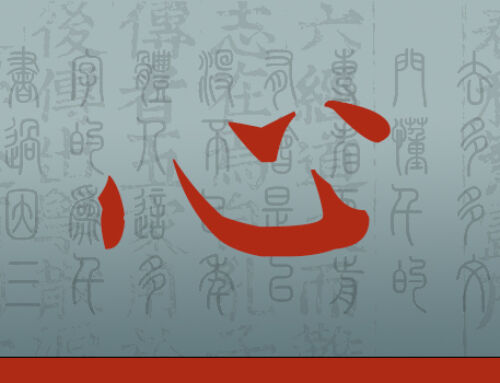

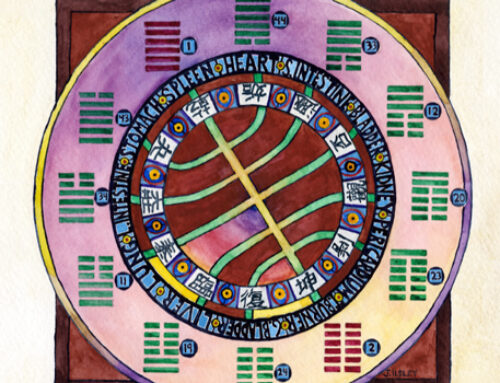



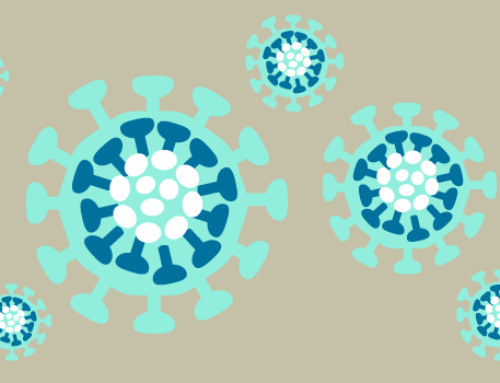
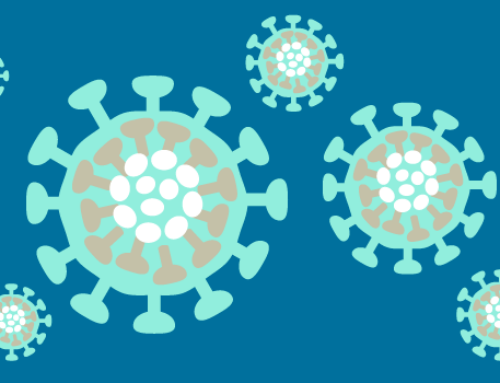
[…] The importance of cyclical and seasonal changes has an impact on our health. Each of us lives in a changing climate in which we are experiencing unprecedented changes in weather (warmer winters and hotter summers), extreme fluctuations in weather and disturbed growing seasons. At this time we are emerging from winter, which in its usual state appears barren upon the surface yet is one of the important times of the year for regeneration and growth. This is a time when the yang qi of nature is unperturbed, when we also need to cultivate and nourish the innermost foundation of our bodies. According to the National Centers for Environmental Information, this past winter has been one of the warmest on record. The emergence and spread of COVID-19 during an unusually warmer winter leading to damper conditions is important to pay attention to as, from a Chinese medicine, perspective COVID- 19 is a warm disease with wind heat pathogens that transmit easily[1]. Finally, we know that increased environmental instability contribute to increased stress, which is further exacerbated in people who have compromised health, high levels of stress and fatigue[2]. […]
[…] illness is characterized by the wu yun liu qi, in English the five movements and six qi (also known as stems and branches). In short, this is a […]